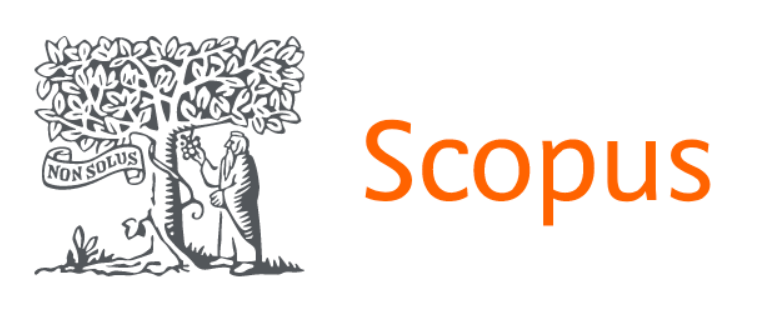RELATIONAL SYNERGY IN INDONESIAN POLITICAL CAMPAIGNS
DOI:
https://doi.org/10.18623/rvd.v22.n2.3305Palabras clave:
Personal Branding, Political Communication, Voter Behavior, Societal Relations, Electoral StrategyResumen
This study investigates how personal branding and political communication shape voter behavior, examining societal relations as a moderating factor in the 2024 legislative elections in Jambi City, Indonesia. The goals are to assess the direct effects of personal branding and political communication on electoral behavior and to test whether societal relations strengthen these effects. Using a quantitative field design, we surveyed 400 registered voters with structured questionnaires and analyzed the data through Partial Least Squares–Structural Equation Modeling (PLS-SEM). The results show that both personal branding and political communication positively and significantly influence voter behavior, and that societal relations significantly amplify these relationships. These findings indicate that electoral choices reflect not only candidate attributes and message strategies, but also relational trust and community engagement. Theoretically, the study advances a relational synergy model that integrates individual-level branding and communication with community-level dynamics. Practically, it underscores the importance for political actors, campaigners, and policymakers of combining authentic branding, contextually grounded communication, and sustained community ties to enhance electoral effectiveness and strengthen democratic trust.
Citas
Aspinall, E., & Mietzner, M. (2019). Indonesia’s democratic paradox: Popular representation versus democratic quality. Asian Studies Review, 43(3), 381–403. https://doi.org/10.1080/00074918.2019.1588052
Blau, P. M. (1964). Exchange and power in social life. John Wiley & Sons.
Bryman, A. (2016). Social research methods (5th ed.). Routledge. https://doi.org/10.4324/9781315716862
Chin, W. W. (1998). The partial least squares approach for structural equation modeling. In G. A. Marcoulides (Ed.), Modern methods for business research (pp. 295–336). Lawrence Erlbaum Associates. https://doi.org/10.2307/3151312
Creswell, J. W., & Creswell, J. D. (2018). Research design: Qualitative, quantitative, and mixed methods approaches (5th ed.). SAGE. https://doi.org/10.1080/13645579.2018.1519384
Daoust, J. F., et al. (2021). Perceptions of honesty and voter turnout: Experimental evidence. Electoral Studies, 71, 102399. https://doi.org/10.1016/j.electstud.2021.102399
Diamond, L. (2019). Ill winds: Saving democracy from Russian rage, Chinese ambition, and American complacency. Democratization, 26(5), 877–892. https://doi.org/10.1080/13510347.2019.1628432
Dillman, D. A., Smyth, J. D., & Christian, L. M. (2014). Internet, phone, mail, and mixed-mode surveys: The tailored design method (4th ed.). Wiley. https://doi.org/10.1002/9781118779587
Effendi, M. (2013). Sistem pemilu dan efeknya pada partai politik di Indonesia. Gadjah Mada University Press.
Esser, F., Stępińska, A., & Hopmann, D. N. (2022). Political communication in comparative perspective: Democracy and electoral contexts. Information, Communication & Society, 25(4), 525–540. https://doi.org/10.1080/1369118X.2021.2024209
Etikan, I., & Bala, K. (2017). Sampling methods in clinical research. BMC Research Notes, 10(1), 1–3. https://doi.org/10.1186/s13104-017-2723-6
Fernandez, R., Gutierrez, P., & Martinez, C. (2023). Relational campaigning and voter behavior: The mediating role of interpersonal trust. Journal of Political Marketing, 22(2), 145–170. https://doi.org/10.1080/15377857.2023.2178325
Gil de Zúñiga, H., Weeks, B., & Ardèvol-Abreu, A. (2021). Effects of the news-finds-me perception in communication: Social media use implications for news seeking and learning about politics. New Media & Society, 23(5), 1386–1405. https://doi.org/10.1177/14614448211027215
Hair, J. F., Hult, G. T. M., Ringle, C., Sarstedt, M., Danks, N., & Ray, S. (2021). Partial least squares structural equation modeling (PLS-SEM). Multivariate Behavioral Research, 56(2), 160–177. https://doi.org/10.1080/00273171.2021.1891920
Hanna, R., et al. (2021). Emotional engagement and political marketing: The role of personal relations in voting behavior. Journal of Political Science Research. https://doi.org/10.1080/15377857.2021.1900718
Hill, D. T. (2019). Social media and political communication in Indonesia. Asian Politics & Policy, 11(4), 639–657. https://doi.org/10.1111/aspp.12496
Homans, G. C. (1961). Social behavior: Its elementary forms. Harcourt, Brace & World.
Huddy, L. (2001). From social to political identity: A critical examination of social identity theory. Political Psychology, 22(1), 127–156. https://doi.org/10.1111/0162-895X.00229
Kaur, G., & Singh, R. (2024). Building political capital through community engagement: Evidence from local elections. Journal of Communication Management, 28(1), 44–62. https://doi.org/10.1108/JCOM-08-2023-0102
Kim, J., & Lee, H. (2023). Voter skepticism toward over-polished political branding: Evidence from young voters. Asian Journal of Communication, 33(2), 185–203. https://doi.org/10.1080/01292986.2023.2176420
Lee, W., et al. (2020). Social media influence on voter behavior: A cross-context analysis. Social Media + Society, 6(1), 1–12. https://doi.org/10.1177/2056305120903890
Li, J., & Su, Z. (2023). Emotional framing in political communication: Effects on voter attitudes and engagement. International Journal of Communication, 17, 2341–2362. https://ijoc.org/index.php/ijoc/article/view/20649
Lohr, S. L. (2019). Sampling: Design and analysis (2nd ed.). Chapman & Hall/CRC. https://doi.org/10.1002/9781119488242
Luo, C., Sun, R., & Chen, Y. (2023). E-government, digital trust, and political participation. Government Information Quarterly, 40(3), 101841. https://doi.org/10.1016/j.giq.2023.101841
Menon, S., & Sharma, R. (2022). Political communication, participation, and behavior: Insights from electoral campaigns. South Asian Journal of Business and Management Cases, 11(2), 189–200. https://doi.org/10.1177/09721509221083366
Nasir, A. (2022). Influence of personal branding on voter loyalty among young electorates in Indonesia. Electoral Studies, 77, 102363. https://doi.org/10.1016/j.electstud.2021.102363
Nugroho, A., Pratama, R., & Setiawan, D. (2023). Digital political campaigns and youth voter behavior in Indonesia’s 2024 general election. Journal of Political Marketing. https://doi.org/10.1080/15377857.2023.2239940
Owen, D. (2020). The internet and campaign communication. In K. Kenski & K. H. Jamieson (Eds.), The Oxford handbook of political communication (pp. 267–286). Oxford University Press. https://doi.org/10.1093/oxfordhb/9780190916398.013.11
Park, S., Choi, M., & Lee, J. (2024). Interactive political communication in social media and its effect on voter trust. Telematics and Informatics, 84, 102035. https://doi.org/10.1016/j.tele.2024.102035
Petty, R. E., & Cacioppo, J. T. (1986). Communication and persuasion: Central and peripheral routes to attitude change. Springer. https://doi.org/10.1007/978-1-4612-4964-1_1
Setiawan, D. (2022). Media and local democracy: The evolving role of communication in Indonesian elections. Journal of Contemporary Southeast Asia Studies, 41(2), 211–229. https://journal.ui.ac.id/index.php/jcs/article/view/14377
Simanjuntak, J., & Ndona, P. M. (2024). Approaching first-time voters through digital media: A case study in Medan City. Journal Nusantara: Politik dan Kebijakan Publik, 15(3), 45–60. https://journal-nusantara.com/index.php/publik/article/view/224
Tajfel, H., & Turner, J. C. (1979). An integrative theory of intergroup conflict. In W. G. Austin & S. Worchel (Eds.), The social psychology of intergroup relations (pp. 33–47). Brooks/Cole.
Ufen, A. (2008). Political party and party system institutionalisation in Southeast Asia: Lessons for democratic consolidation in Indonesia, the Philippines and Thailand. The Pacific Review, 21(3), 327–350. https://doi.org/10.1080/00472330701637040
Zhang, X., Li, Y., & Chen, H. (2022). Personal branding and political trust: How authenticity and integrity shape voter perceptions. Public Relations Review, 48(4), 102235. https://doi.org/10.1016/j.pubrev.2022.102235
Descargas
Publicado
Cómo citar
Número
Sección
Licencia
I (we) submit this article which is original and unpublished, of my (our) own authorship, to the evaluation of the Veredas do Direito Journal, and agree that the related copyrights will become exclusive property of the Journal, being prohibited any partial or total copy in any other part or other printed or online communication vehicle dissociated from the Veredas do Direito Journal, without the necessary and prior authorization that should be requested in writing to Editor in Chief. I (we) also declare that there is no conflict of interest between the articles theme, the author (s) and enterprises, institutions or individuals.
I (we) recognize that the Veredas do Direito Journal is licensed under a CREATIVE COMMONS LICENSE.
Licença Creative Commons Attribution 3.0







